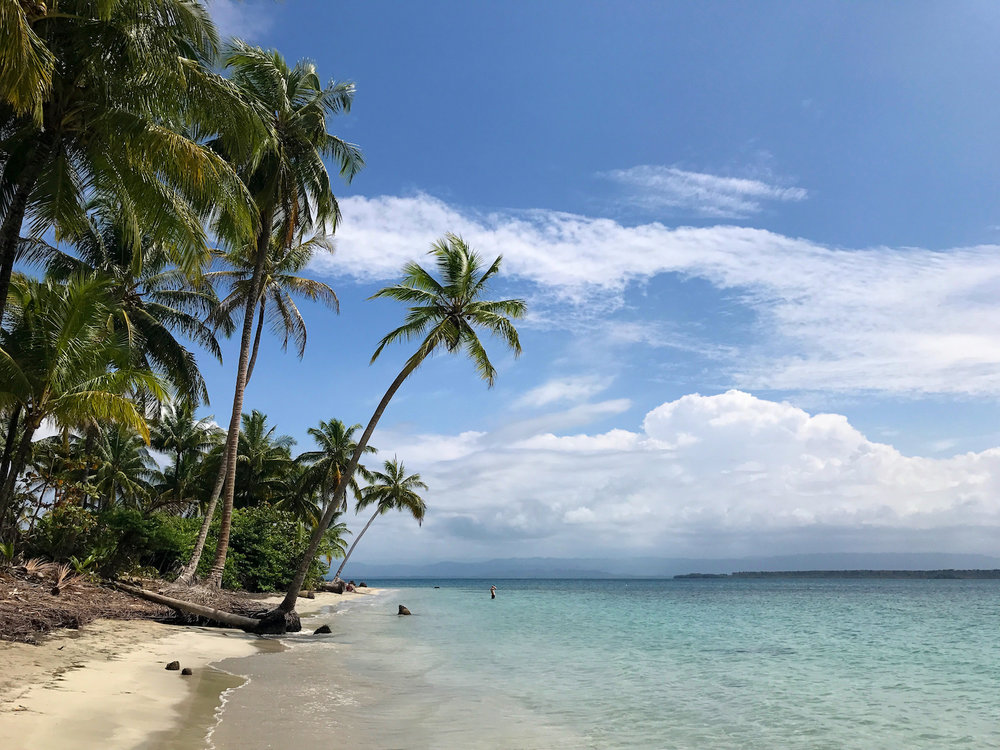How to Travel With Less Plastic: 15 Easy Ways to Reduce Waste
/
Quiet & Mystical Morning in Andalusia, Spain | traveling with less plastic for a greener world
Well... here we are... in the strawpocolypse...
The past year, renouncing the use of plastic straws has swept the world.
And for good reason.
Have you seen the viral video of the group of marine biologists in Costa Rica pull a straw out of turtles’ nose? It’s gut-wrenching. And the poster child for the anti-straw movement.
Let me ask you a question. When you visit dreamy beaches in Panama or Indonesia, would you prefer walking on a fine sand beach, or a beach riddled with plastic waste?
I think the answer is obvious.
Yet still, humans continue to plague the world by producing, purchasing, and consuming plastic.
Even after watching that video, still not convinced plastic is a problem?
Well, here are some CRAZY statistics about plastic use:
Since 1950, 9.2 billion tons of plastic has been produced, and a staggering 6.9 billion tons of plastic have become waste, accumulating in landfills, oceans, rivers, and the rest of our beloved planet. Source
40% of plastics are used only ONCE. That’s it. Just used ONE time. Would you buy a shirt to wear only one time? No, it’s just plain wasteful. We need to start looking at plastics the same way. Source
Every year, 8 million metric tons of plastics enters our ocean. That’s like dumping one New York City garbage truck full of plastic into the ocean every minute of every day. Source
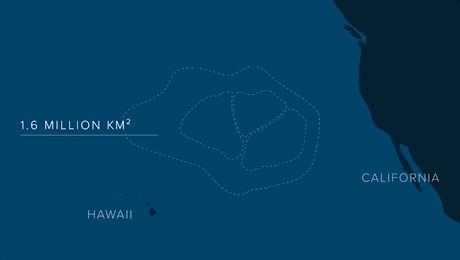
Source: The OCean Cleanup
There’s so much plastic in the ocean that it’s formed floating “nations” or gyres. The largest is the North Pacific Gyre or commonly known as the Great Pacific Garbage Patch located between California and Hawaii, and is twice the size of the state of Texas or three times the size of France! Source
It’s predicted that by 2050 there will be more plastic in the ocean than fish (by weight). Source
In case you didn’t know, plastic breaks down over roughly 450 years to forever. For...ev...er. They never fully breakdown but instead turn into microplastics.
The good news? Plastic was only invented at the turn of the 20th century, and mass production began during World War II. So clearly, we can do without it.
A personal motto of mine I’ve lived by for many, many years and I wholeheartedly we should all be living by this statement;
You vote for the world with every dollar you spend.
Think about it.
How you chose to spend your money, you’re throwing your support behind them. You're telling the world what you want, and what you value.
Do you buy from the farmer’s market or Foster Farms? Do you eat meat or fish at every meal or do you choose to eat a plant-rich diet?
Do you buy from a coffee conglomerate or your neighborhood cafe?
Do you book a trip through a major credit card or booking sites like Booking.com or Lonely Planet or with a small business like Sapphire & Elm Bespoke Travel? Had to.
It makes a difference.
Okay, you might be wondering, exactly how do plastic and travel go hand-in-hand?
This article was born while packing for a flight, angrily looking at the pint-size Ziploc bag, you know the one recommended as TSA approved carry on for liquids, ripping in a corner and covered in some goo which clearly leaked out of some serum. It was time to toss it.
I’m plastic conscious so I re-use these bags, again and again, every time I fly, trying not to use new (and toss the old) often. It pains me to think of where this plastic bag will end up.
I thought, “enough is enough, there’s got to be an alternative to single-use Ziploc plastic bags for carrying on liquids…”
I needed a reusable bag I could put my TSA approved liquids for carrying on. One that wasn’t going to rip after 5 uses, one that I could wash off inevitable leaks from my travel-size products, one that wouldn’t end up causing damage in the ocean.
So I looked it up. There are lots of alternatives. Yay, me!
Then I thought, what else am I doing while traveling that is wasteful of plastic? Even downright useless or pointless because there are more sustainable alternatives.
What other plastic alternatives do I have when I travel?
How can I help prevent more plastic from being dumped into the ocean and into landfills?
At the end of the day, we all impact this planet with every purchase, action, and behavior.
While one person’s actions might seem small and insignificant, they add up. Then add up all those actions from a small handful, then a bigger population of people around the country, then around the world.
I’m reminded of a quote written on an inspirational poster, hung on the wall of my 9th-grade Geometry class, that read, “No one can do everything, but everyone can do something.” - Max Lucado
It starts with you.
I challenge you, after reading this, to choose one thing that you can commit to doing starting today. Just one thing. Then slowly start to layer on, committing to another one when you feel the time is right, then another one.
Plastic Alternatives while Traveling Abroad (and at home, too!)
1. TSA Approved Liquid Bags for Carry-On
Since this is the plastic I needed an alternative for which began this endeavor, we’ll begin here, too!
I’m sure you’re familiar with TSA’s 3-1-1 Rule: 3.4-ounce container or less, in 1 quart-sized clear plastic bag, and 1 bag per customer. So in order to carry-on liquids on your flight, TSA has the following requirements:
Must be clear, quart-sized, resealable bag.
Please note that consumables need also apply with the rule, including water, peanut butter, and jams. I’ve had to toss out peanut butter from my carry on because it is considered a liquid.
Like these or these. After researching bag options, I read several reviews from people saying the TSA agent doubted the legitimacy of the bag, having people
So, I spoke to a TSA agent to clarify, and they confirmed that they do not endorse any particular company or brand - as long as it is quart-sized and clear then the bag will suffice.
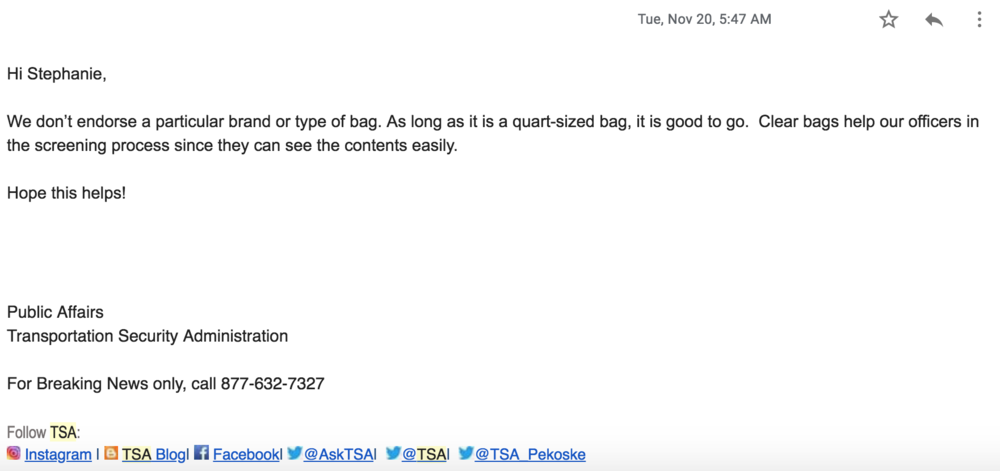
2. Check Your Seafood
I’m going to say something that may be quite controversial…
While seafood is seen as the healthier, more sustainable, more moral choice for people (lots of people decide to be pescatarians instead of vegetarians, or seagan instead of vegan… if that’s a thing?), the fishing & seafood industry is actually the worst contributor of plastic in the oceans. Period.
Reports conclude “ghost gear”, a.k.a. abandoned fishing gear is the number one threat to marine life. Read this, this and this.
Ghost gear includes nets, long lines, fish traps, lobster pots or any man-made contraption designed to catch fish or marine organisms.
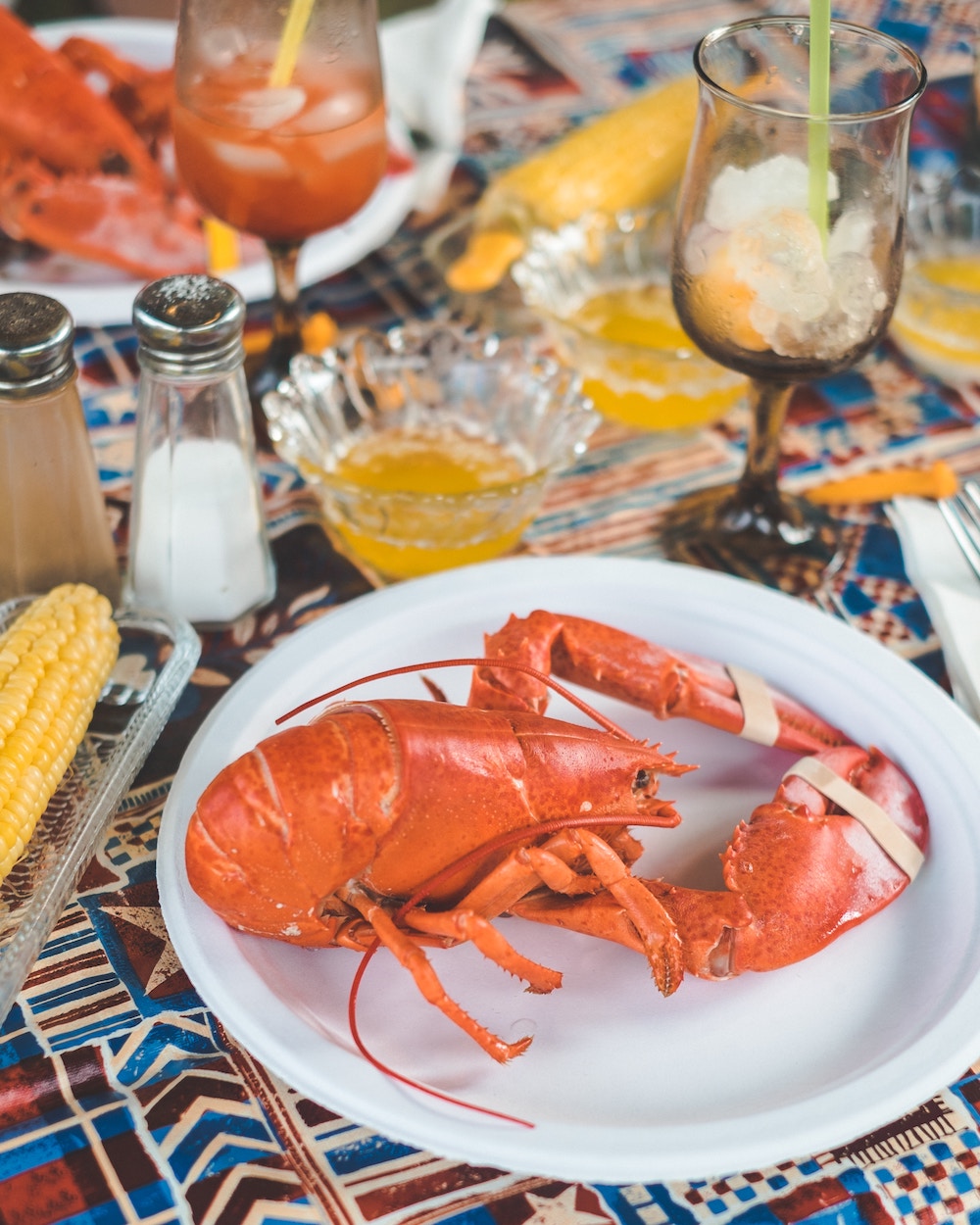
seafood dinner comes with a high cost of waste & environmental issues
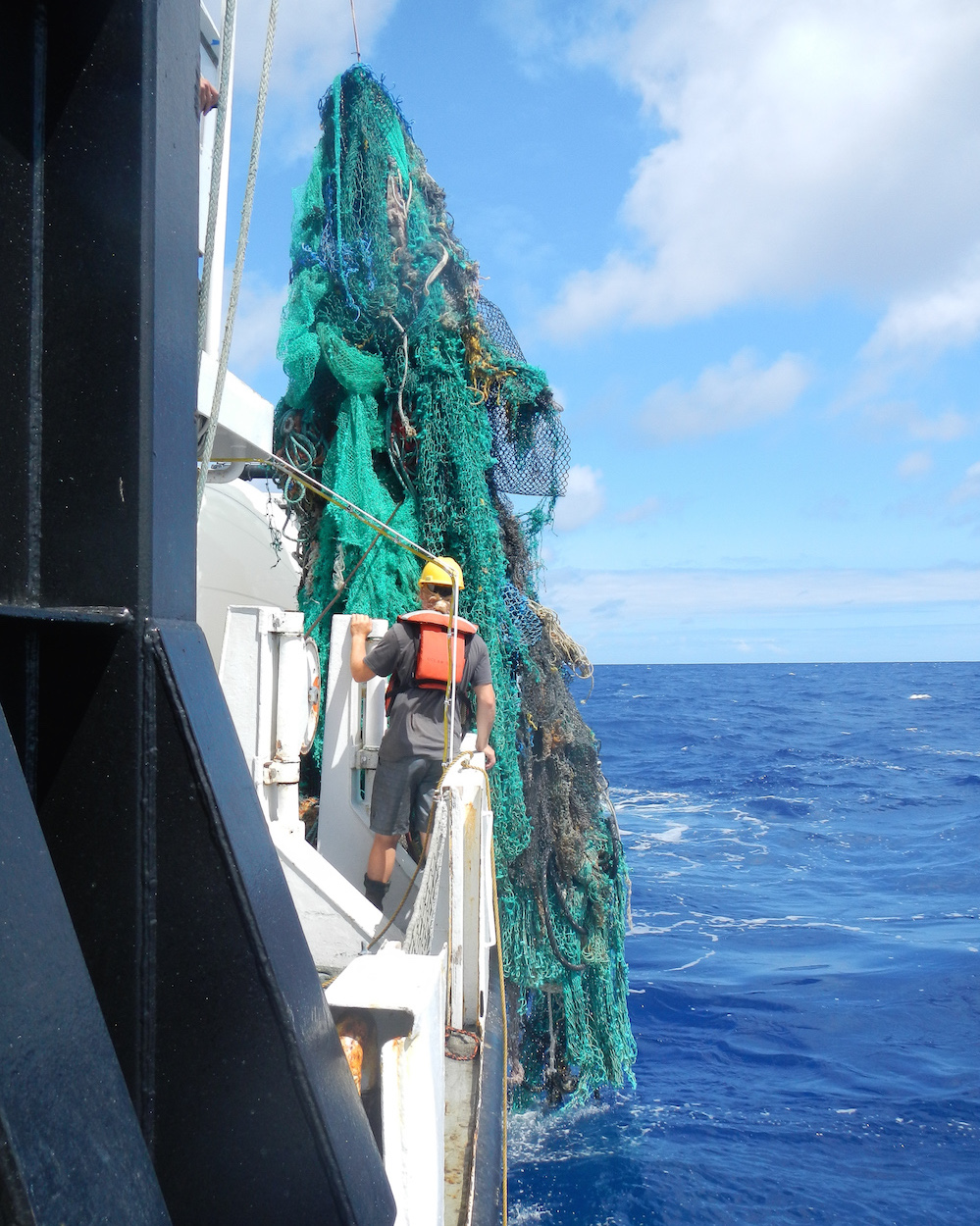
“ghost Gear” plastic waste. Source The Ocean Cleanup
Makes you wonder why there’s such an uproar over plastic straws, and not seafood…
I’ve been plant-based for almost two years now, but this is not the place for me to ask or tell you to make such a big lifestyle change. I only ask that you challenge your perception about the benefits versus the environmental impact of seafood.
3. Market or Grocery Bags
As you know, plastic never fully break down, they remain as waste forever however, the average lifetime use of a plastic bag, which is 12 minutes. 12 minutes of use, forever in a landfill or ocean. Source
I always travel with a couple of reusable bags for when I head to the market for a few grocery items or an obligatory shopping for souvenirs day.
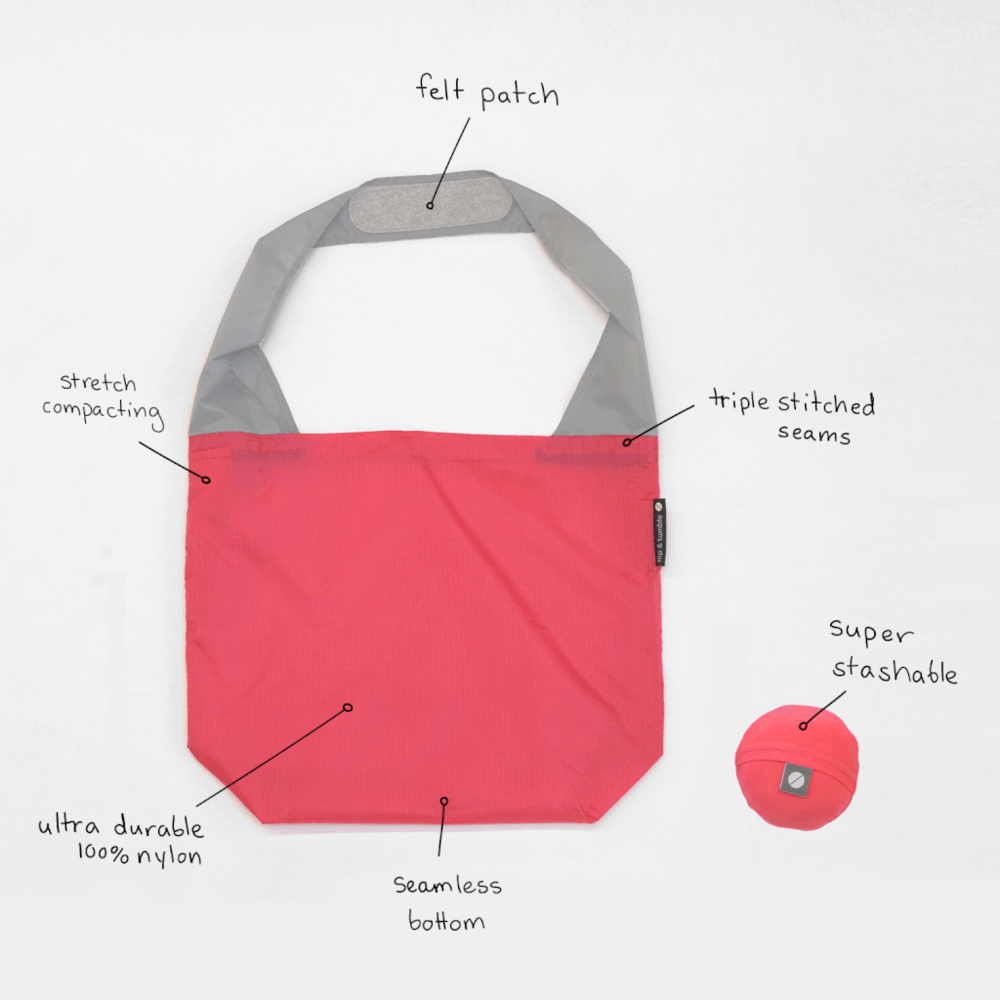
image via flip & tumble
Reusable grocery bags are something you should already be using at home. No excuses, it’s almost 2019. However if you’re in need of a few I absolutely love Flip & Tumble’s 24-7 Bag because, in addition to being reusable and washable, it’s super durable, lightweight and folds into itself for easy transport!
Note: These bags make great gift wrapping bags. Instead of wrapping your Christmas, Hanukkah, birthday, etc. gift in wrapping paper (which is packaged in plastic - waste) for them only to toss (ugh - double waste!), I recommend wrapping their gift in a useful bag which is in of itself a gift!
More alarming facts about single-use plastic bags.
4. Water & Other Drinking Bottles
Around the world, nearly a million plastic beverage bottles are sold every minute, so it goes without saying that plastic bottles and bottle caps are plentiful in our oceans.
The most commonly found form of litter collected on land was polystyrene followed by polyethylene terephthalate (PET), the material used to make bottles for soft drinks. Top three contributors are three of the largest consumer brands; Coca-Cola, Pepsi Co. and Nestle. Source
You cannot be one of those people who buys a plastic water, soda, or tea bottle whether you are traveling abroad or at home.
While traveling, make sure to bring a reusable bottle with you to refill.
Even while traveling through countries where you can’t drink the tap water, I found that restaurants, hotels, hostels, airports, train stations, etc. all provided opportunities to refill my bottle. Sometimes they did charge to refill, but the cost was less than buying new anyways.
Personally, I usually bring my 20 oz. insulated Klean Kanteen, which I’ve added a carabiner clip to so I can attach to another bag or hold with a few fingers. I find 20 oz. to be a good size, if it were bigger it might be too heavy to carry on a day to day basis. Also note that 32 oz is about 1 liter, and often places charge a certain amount per liter to refill a bottle.
Tip: Have several different reusable bottles on hand that are always full and in the fridge. That way when you’re rushing out the door you can easily grab one, making it a seamless transition from plastic water bottles to reusable ones.
My favorites are S’well, Klean Kanteen, Hydro Flask, Bkr, and Lifefactory.
If you need another reason to be wearing of single-use plastic water bottles, the process of producing bottled water requires around 6 times as much water per bottle as there is in the container. Source
5. Tampon Alternative
Even if you use OB tampons with no plastic applicator, each tampon is still individually wrapped in plastic.
I’ve been using my cup for almost two years, and I love it, I can’t ever see myself going back to regular tampons.
Admittedly when I first started using it I struggled to remove the cup quickly and efficiently. It took me some time and practice to figure out the angle in which I needed to reach up, grab and squeeze it in order to loosen the suction action. I remember being in my friend’s bathroom in Norway for what seemed like an hour struggling to get hold of it!
But transport yourself back 15, 20, 30 years ago when you learned how to insert a tampon.
It was awkward! It felt so uncomfortable! I bet you can remember the feeling of walking when it wasn’t inserted all the way up, ugh!
There was a learning curve there, so allow a learning curve here. For the good of the planet. Not to mention how cost effective it is not having to buy a box of tampons every month!
6. Order Coffee “For Here”
One of the best parts about traveling is that you’re not in any rush.
You don't have to adhere to a strict itinerary like most days at home that is packed with work, parenting duties, errands, household chores, working out, and trying to balance a personal life!
So chill while traveling - order that coffee “for here” and spend 20 minutes leisurely savoring that cup wherever you are in the world while you read the paper or a book, write in your travel journal, or simply people watch.
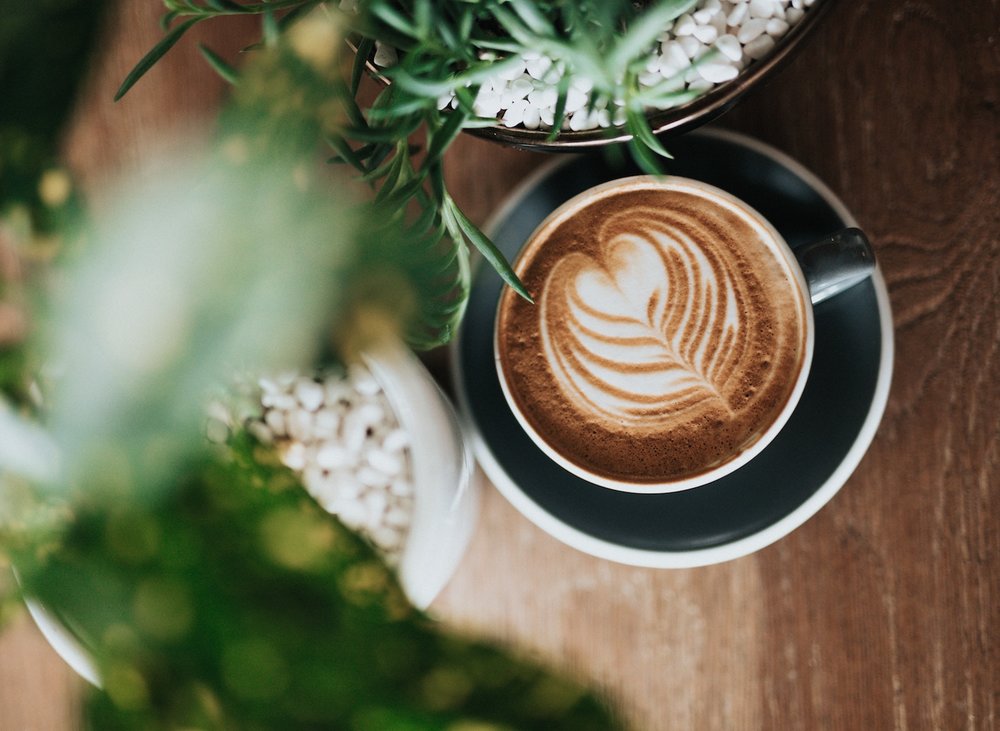
There’s research that shows even having a mindful cup of coffee to start the day at home, can help set up a calmer and more intentional day than if we were to rush through it!
Speaking of coffee - are you still using coffee pods? While Nespresso (a division of Nestle, see above) lags to create a more sustainable aluminum coffee pod (expected in 2020), Halo has already created the most sustainable coffee pod option on the market which completely decomposes in 90 days.
How you can make a difference? If you have a Nespresso machine, switch over to Halo coffee pods at home. And while traveling, if you have a Nespresso machine* in your hotel room, tell the hotel you’d like to see them make the switch to Halo coffee pods.
*Halo is only compatible with Nespresso machines.
7. Reusable Travel Size Containers
Avoid buying travel size toiletry items like shampoo or soap.
Instead, bring your own bathroom products in reusable travel size containers so you don’t use your hotels.
My favorites are these.
8. Ice Cream in a Cone
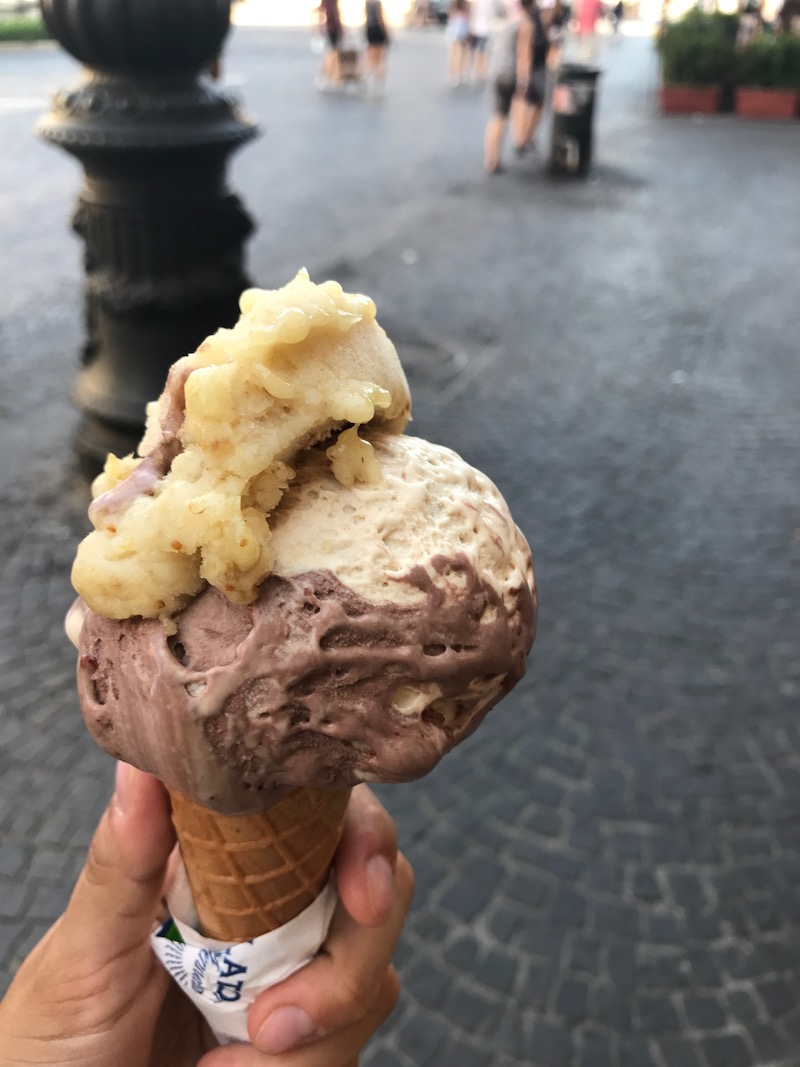
gelato in naples, italy. Hold the Plastic.
Whether you’re in Italy, Croatia, or at your neighborhood creamery, asking for your ice cream in a cone saves the plastic spoon. Not to mention the paper cups are coated in plastic.
9. Package Free Food
Good for the health of the planet and you! Stick to foods that don’t need plastic packaging like fruits and vegetables.
Better yet, find a farmer’s market where you're traveling (or at home) and avoid the plastic altogether since there are no plastic stickers on produce at farmers markets!
10. Straws
Okay, here’s where I get to alternatives to plastic straws!
The most sustainable alternative to plastic straws is using no straw, whether that’s asking for the drink hot or simply telling the server you don’t want a straw in your iced drink.
Next most sustainable option is reusable straw options made from steel or bamboo since you can buy a package of four and reuse endlessly. The downside here is that you have to carry them
Finally, paper straws are a last better option, as they are still single-use and come wrapped in plastic packaging.
Tip: When you find a place that has reusable or paper straws, let them know you appreciate their effort by telling a manager or other staff member, and writing them a nice review online!
11. Food Utensils
Ordering food to go creates a lot of plastic waste, in the form of to-go containers and plastic utensils wrapped in plastic.
While traveling, carry a set of reusable utensils so if you have a picnic or end up ordering food to go you can save some plastic.
I like this bamboo set with carrying case or this titanium set with carrying case.
Tip: purchasing a reusable set with a carrying case helps to keep the items together, easily stored, and clean while in transit.
12. For your Mouth - Gum, Floss, Toothbrush, oh my
Gum wasn’t even on my radar of plastic products to avoid until I really started doing the research on plastic waste… and it’s disgusting.
Gum is made of synthetic rubber, which is a type of plastic.
So not only is the packaging comprised of plastic… but the actual gum is also plastic. And there’s a lot of it being disposed of into the landfill (since gum isn’t recyclable) and therefore rivers and ocean… a whopping 100,000 tons of plastic waste annually. From chewing gum. Source
Instead, opt for organic fennel or peppermint essential oil. Bonus for buying it in a glass container.
This got me thinking about what other plastic we’re putting in our mouth. And I landed on floss. Floss is actually made of plastic fibers, dispensed in a plastic container, and then packaged in plastic. Yikes, triple plastic threat!
Finally, let’s look at the toothbrush, which are made from plastic. The best option is to switch to a toothbrush made out of bamboo instead of plastic - like these.
If you’re not ready to make that switch, find an electric toothbrush where you change the heads out instead of the entire toothbrush.
13. Razor
Sometimes going backwards is the most progressive thing you can do.
While we’re seen an uptick in the trend of “old fashioned” men’s shaving establishments with the straight razor, it’s also becoming more trendy to use metal razors instead of plastic. Like this safety razor. Or these safety razors.
While you’re at it, consider a plastic free shaving cream alternative like coconut oil in a glass jar or a bar of shave soap.
14. Food Storage
After a few weeks of my 4.5 months traveling Central America, I finally found some Tupperware to buy and use. It had been an item I didn’t even consider bringing with me, but I found it to be something I constantly wished I had!
When I traveled between places I would hold on bags of beans, rice, nuts, and other food items. When I was in a location a few days or weeks it would be empty to hold leftovers! I highly recommend collapsible containers for the space saving option.
15. Rethink the Purchase
Lastly, the most sustainable thing you can do is to not make the purchase.
After all, packaging is the largest end-use market segment accounting for just over 40% of total plastic usage. Source
Our idea of sustainability being reduce, reuse, recycle is a bit limited, and frankly outdated.
Should really be more like; Refuse, Reduce, Reuse, Repair, Repurpose, Rent (or borrow), then finally, Recycle.
Your Thoughts?
It’s clear that humans are affecting the planet.
While this is certainly not an exhaustive list of all the ways you can go plastic-free when you are traveling abroad or living daily life at home. However, if we all made these changes, think of the impact we could collectively make?!
So, how will you commit to reducing your plastic consumption? Tell me below in the comments, I would love to know what touched or surprised you!
For me, I’m currently doing most of the above (can’t preach if I don’t practice, right?) however, I’ve just switched to plastic free floss which I’m really excited about!
Additionally I think I’m going to make the switch to metal razors once my current razor wears out!
Next: The Radical & Sustainable Gift You’ll Be a Hero For Giving
More Resources on Living without Plastic:
I Quit Plastic
My Plastic Free Life
Zero Waste Collective
Wild Minimalist
Going Zero Waste
